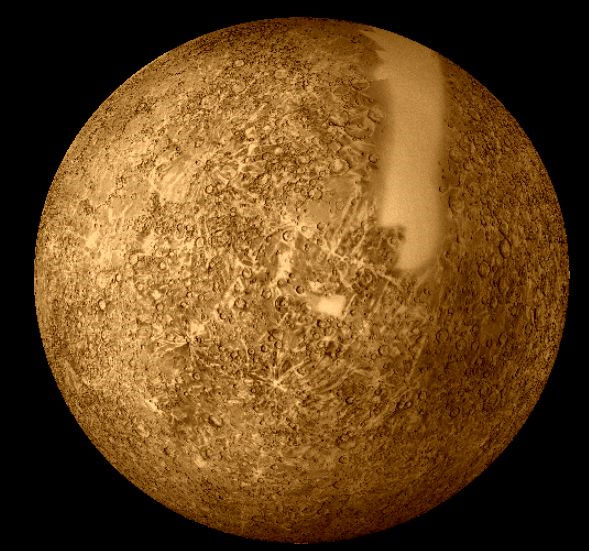Mercury once collided with large asteroids?
Mercury once collided with a large asteroid, which caused the planet to slow down, while also causing it to change its direction in the opposite direction to the Sun.
>>>Learn the secret of Mercury formation
This is a hypothesis proposed by French and Portuguese astronomers in an article published in the journal Nature Geoscience.
Mercury - the solar system's first planet, orbits an irregular trajectory: The planet orbits its axis three times while spinning around the Sun twice.
Modern astronomical geography predicts that Mercury should have turned in a trajectory in sync with the Sun, which means that when spinning around its axis and spinning around the Sun, Mercury always faces one side of the Sun. .

Most scientists think that Mercury when it first formed turned very quickly, but when it was braked, it "jumped" from its orbit in its current orbit due to disturbance in its core.
However, the group of astrophysicists led by Mark Wieczorek, of the University of Paris named Diderot (France), suggested another hypothesis that Mercury could have the current orbit. by colliding with a large asteroid, changing the direction of rotation and reducing its rotation speed.
According to scientists' calculations, Mercury orbits need to synchronize with the Sun's movement in both normal orbital and inverted orbits.
The highest probability to appear resonating between the Sun's motion and Mercury's movement is 29% in the case of normal and extremely low orbits in the case of reverse trajectories.
Scientists believe that Mercury cannot escape this situation without an additional push from a large asteroid.
Mr. Wieczorek and his colleagues calculated the minimum size of a collision with asteroids that pushed Mercury out of its orbit.
Meteors leave holes with a diameter of 250 - 450km, which can disturb Mercury orbit and take it out of the synchronous rotation mode.
On the surface of Mercury there are about 40 holes of this size. Collisions with larger sized asteroids will quickly bring Mercury into orbit today. About 14 holes in diameter from 650 - 1100km have been found on the surface of Mercury.
- Things you may not know about Mercury
- Overview of Mercury
- Ghost ocean on Mercury
- Will the Earth not be threatened by the coming decades?
- Photos never published about Mercury
- What happens when you drink mercury?
- Mercury is no different from a raisin fruit turning around the Sun.
- Mist containing mercury poisoned the US city
- Symptoms of mercury poisoning and how to prevent it
- No planet collided with Earth in 2040
- Uncover the secret of the
- Astonishing image: Mercury passes between the Earth and the Sun
 Van Allen's belt and evidence that the Apollo 11 mission to the Moon was myth
Van Allen's belt and evidence that the Apollo 11 mission to the Moon was myth The levels of civilization in the universe (Kardashev scale)
The levels of civilization in the universe (Kardashev scale) Today Mars, the sun and the Earth are aligned
Today Mars, the sun and the Earth are aligned The Amazon owner announced a secret plan to build a space base for thousands of people
The Amazon owner announced a secret plan to build a space base for thousands of people